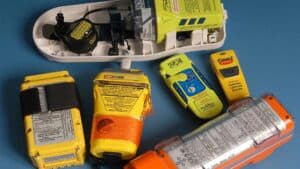Wireless Marina Metering Systems (NEC Compliance Made Easier)
With more states adopting NEC standards, marina owners and operators are finding that compliance is coming sooner than originally anticipated. Wireless marina metering systems can greatly facilitate that compliance, which is intended to provide ground fault protection at each supply point in the marina.
The only available solutions when NEC 2017 was released were expensive and time consuming to implement. To fill the need for more affordable solutions, many electrical vendors adopted the benefits of wireless and computer technology to automate solutions meeting the requirements of Article 555.
Advantages of Remote Monitoring
If you can imagine a marina with several docks and hundreds of slips, then you know how difficult it would be to track down a tripped ground fault without knowing the location – and that’s already assuming you know one has tripped. A large part of any marina electrical upgrade is the physical wiring beyond live current, to provide communications between power outlets back to a central control for monitoring, and in some cases even control. With remote monitoring, the guesswork is removed.
An ideal system would not only be wireless to a central control but would also offer mobile app integration to your cell phone. A GFCI gets tripped, and within moments, not only do you know that there’s a tripped device, but you also know the slip and location – all delivered to the palm of your hand.
Four Wireless Metering System Options
The first device on our list comes from Marine Sync. Their Remote Utility Monitoring and Control is designed for wireless meter reading, ground fault monitoring and utility control. Utility monitoring allows you to track meter readings for each power pedestal, email statements directly to your customer, or export to the billing system. The whole system is cellular and does not rely on a Wi-Fi network. Ground fault monitoring notifies you in real time when a ground fault has been detected and gives you the option to cut off power wirelessly from your phone or from your desktop computer. Watch their video here.
NK Technologies provides a more traditional and custom approach by offering a series of ground fault sensors that can detect earth leakage. Offering two models for use in a marina environment, the AG Series Ground Fault Relay has the trip point of the sensor set at the factory. The AGL Series Ground Fault Relay can be field programmed to a wider range of cut-offs. When a fault is detected, the sensor closes the circuit, shutting off all power to the power pedestal or the connected equipment. The power is restored with a physical breaker handle after you have identified and fixed the problem.
Marina Electrical Equipment uses patented solid-state electric metering technology by International Intelligent Metering, LLC. With their NUCORE™ system and the on-board ground fault monitoring, a transceiver device communicates data back to a base station and computer at the marina office using mesh networking, and is able to identify individual boats or slips with dangerous AC or DC leakage to ground or water. Approved by the State of California Division of Measurements and Standards, this device can turn off power to any boat that has a ground fault.
Bender Inc. provides their MarinaGuard Series Ground Fault Monitoring Panel, advertised as satisfying requirements of 2011 NEC article 555.3 for ground fault protection. The MarinaGuard has options for either single feed monitoring or branch monitoring, adjustable from 100 mA down to 6 mA. These adjustable trip levels make it compatible with NEC 2017. If a ground fault is detected, the MarinaGuard will activate an alarm, and illuminate the front enclosure activating the strobe light. Once faults are cleared, a physical reset button returns it to the normal state. Options are available for wireless SMS alarm messaging when an alarm has activated, as well as compatibility with Bender’s digital communication system, which can be integrated with Ethernet and ModBus/TCP networks.
More wireless systems are likely to be introduced in the months ahead. Check back as we’ll update this article with new vendors and products as they become available.














